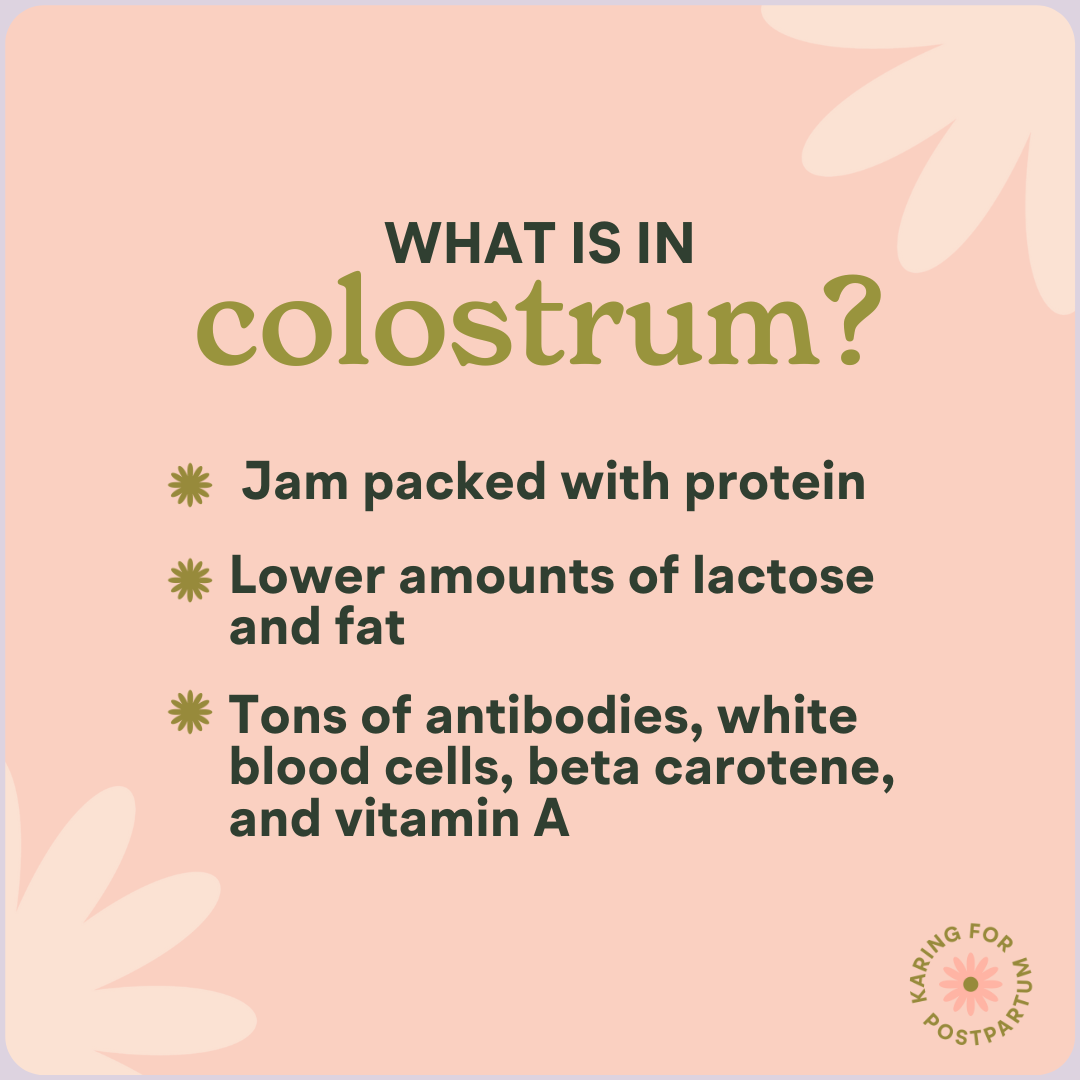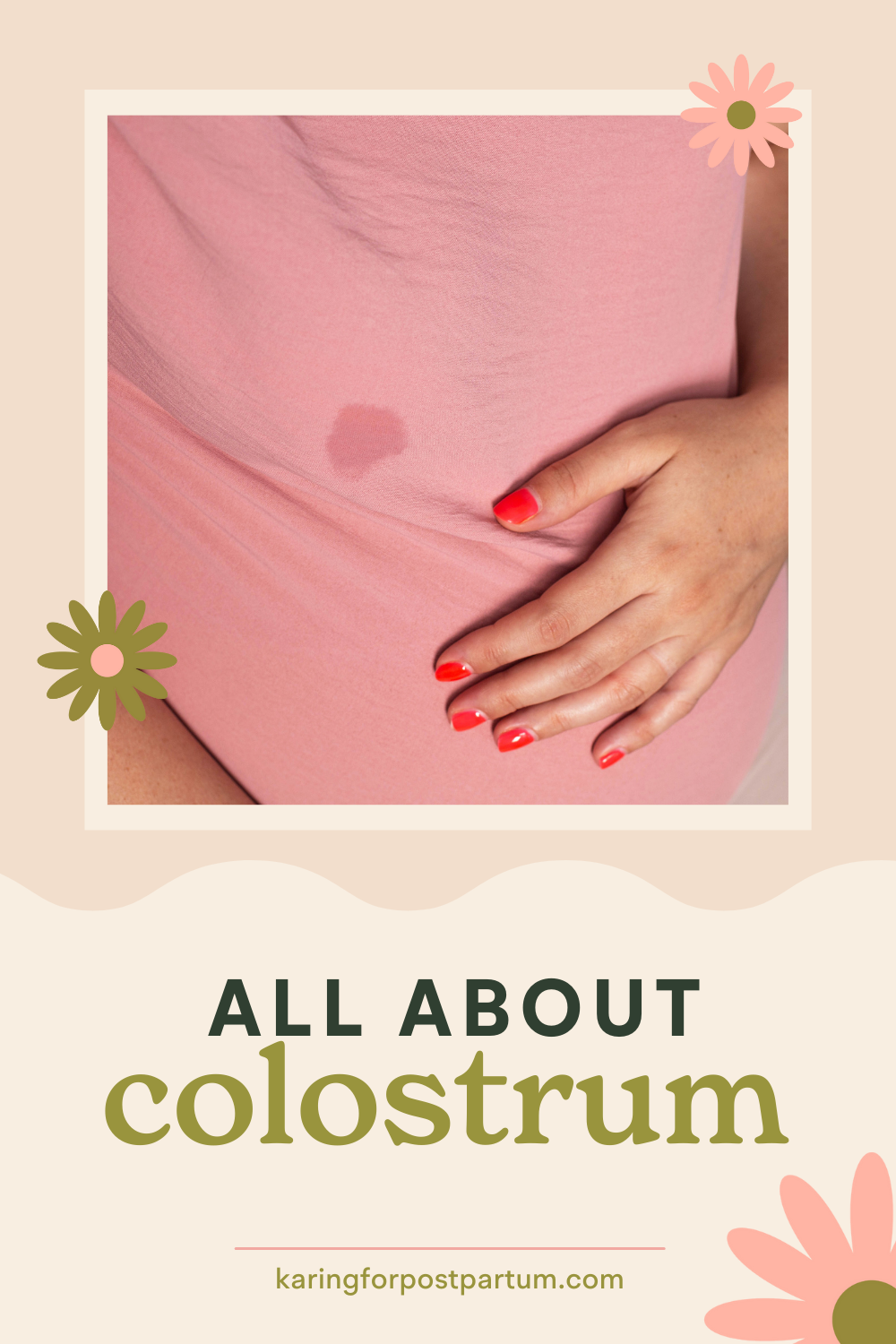All About Colostrum
Pregnancy is such an exciting time filled with anticipation and preparation for the arrival of a new little one. As a pregnant mama, you are probably already preparing a nursery, laundering their clothes, and doing all the things that we do to get ready for our baby to come! If you are planning to breastfeed as a first time mama, you might be taking a breastfeeding course (you can check out mine here) and you may have even heard a little bit about collecting colostrum before your baby's arrival. In this blog, we'll explore what colostrum is and the benefits of collecting colostrum before birth. I am also going to cover how to collect colostrum and some of my favorite products that are helpful when doing it!
AN important NOTE
First thing’s first, you always should check with your individual care provider before collecting colostrum. This is an extremely important step for all pregnant women, but especially for those who have high risk pregnancies, are carrying multiples, have an incompetent cervix or cervical cerclage, or have a history of preterm labor or preterm rupture of membranes. We want to make sure we’re keeping you as safe as possible in looking at the benefits of collecting colostrum versus the individual risks that can occur. Based on your history or risk factors, your doctor may be hesitant to allow collecting of colostrum/ nipple stimulation as that can increase oxytocin levels, which can cause uterine contractions. If your body is already at risk for going into labor prematurely or already on the verge of labor and we’re trying to keep things at bay, nipple stimulation and collecting colostrum could put us over the edge and throw us into labor earlier than anticipated. As always, it’s just best to chat with your doctor/midwife first!
With that being said, in most cases in an otherwise “low risk” pregnancy, many doctors and midwives are okay with antenatal hand expression and collecting colostrum from 36 or 37 weeks and beyond! But please, always have a conversation with your care provider first!
WHAT IS colostrum?
Colostrum is known as “first milk”. It’s the first milk your body produces with pregnancy, and it typically starts being produced in the second trimester. You may or may not have any idea it's even happening. You may notice some little flakes in your bra (dried colostrum), or you may not! Leaking colostrum during pregnancy does not mean that you are going to have a better breast milk supply than if you do not leak any. That’s not how milk supply works. Whether you leak any colostrum during pregnancy or not, it’s there and it’s jam packed with goodness!
This “first milk” is also the milk that your baby will get when breastfeeding the first few days of life, until placental birth triggers lactogenesis two (learn more about lactogenesis here). Colostrum is also called “liquid gold” because this first milk is jam packed with protein, has a lower amount of lactose and fat, has tons of antibodies, white blood cells, beta carotene, and vitamin A! Colostrum helps establish your baby’s gut microbiome and can act as a laxative to flush out meconium. Beta carotene is what gives the colostrum that golden color that we notice in the first few days postpartum.
Collecting colostrum during pregnancy does not take away from what your baby will get those first few days postpartum. Your milk doesn't just sit in your breast, leaving it empty when you collect it. Colostrum is produced continuously as expressed in those first postpartum days. Baby’s still going to be able to get plenty of your colostrum on demand any time they nurse, until lactogenesis two takes over and starts transitioning to mature milk. Colostrum is produced in small quantities, as baby’s belly is tiny those first few days (size of a marble to walnut).
This picture below shows what it looks like when your milk starts to make that transition from “liquid gold” colostrum to mature milk. For some it may be a little more abrupt where it's like “okay it was clear or golden and now all of a sudden it is white and creamy.” And for some people like myself, it tends to be more like a mixture of gold and white, and then it slowly transitions into all the way white. It’s different for everybody, but either way it's really cool to see! Transitional milk is like the “step between” colostrum and mature milk.
benefits OF COLLECTING COLOSTRUM
Collecting colostrum antenatally is not a must, but there are some benefits for both mom and baby in doing so! It is an option that can help make mamas feel like they have a better handle on breastfeeding ahead of time, and helps create a little stash if supplementation is needed in the early days of breastfeeding. No matter whether you choose to collect colostrum antenatally or not, has no implication on your relationship with your baby or your breastfeeding journey!
Diabetic Mothers
Mothers who are diabetic through the pregnancy– whether it be gestational diabetes, diabetes type one, or diabetes type two– tend to be at a higher risk for their newborn to be born with hypoglycemia (low blood sugar). In those cases, glucose monitoring is indicated and there are times we need to get them something in their belly to increase that blood sugar quickly. Alongside nursing, supplementation may be recommended in some cases. It’s nice to have your own colostrum syringes on hand for this too if you’re preferring to avoid bottles of formula (but there are always options!).
Antenatal colostrum collection was also shown in this study to increase the rates of exclusive breastfeeding in infants of diabetic mothers. I was a gestational diabetic mom with my first baby. Not only are our babies at a higher risk for hypoglycemia or low blood sugar postpartum, but that also puts us at a higher expectancy for needing supplementation to combat those low blood sugars. There are always going to be exceptions in certain circumstances, sometimes babies need formula supplementation, but having some colostrum on hand can lower the risk of that happening. It’s also important to remember that hypoglycemia can sometimes occur in babies born to non-diabetic mothers, which can catch some people offgaurd!
Jaundice
With subsequent pregnancies I struggled with my babies being jaundice. My third baby was very jaundiced (when baby's serum bilirubin levels are high). The way to get rid of that bilirubin is to excrete it through their stool. Therefore, the more they eat, the more they poop, the better off they're going to be. Colostrum is a laxative and is going to make them stool more, which makes it very beneficial for babies who are jaundice. Alongside nursing, having extra colostrum syringes on hand can be helpful in lowering your baby’s bilirubin levels and decreasing their jaundice!
My third baby was jaundice and also started getting more lethargic (which can happen as serum bilirubin increases to a pretty high point), making it very hard for her to latch and feed appropriately. I was having to supplement with colostrum to decrease her bilirubin levels because she was coming to breast and didn’t have the energy to open her mouth and latch, but she would take the colostrum from a syringe with no problem. In that situation, I was so grateful to have harvested colostrum syringes to give her! Eventually, we were able to get back to breast as the lethargy disappated and her serum bili levels decreased.
The Breastfeeding Relationship
Some studies have shown that antenatal colostrum collection can help our milk come in faster, which can help us establish a higher exclusive breastfeeding rate. Even for women who are not diabetic, collecting colostrum antenatally can “decrease the amount of time between birth and the establishment of full lactation”. This can lead to higher rates of exclusive breastfeeding, which is really neat!
And of course, if your breastfeeding journey isn’t starting out as you anticipated (latch issues, NICU stay, birth trauma, etc), it’s nice to have that collected colostrum for those circumstances too. Your baby is getting fed your own milk while you continue working latching and breastfeeding with your lactation consultant to get where you want/need to be if that’s what you choose!
Peace of Mind
We don't know if our baby’s going to struggle with something like jaundice. We don’t know if our baby is going to struggle with blood sugars even though we’re not diabetic during pregnancy (yes, this can happen!). We don’t know if our baby is going to need NICU care and would really benefit from some harvested colostrum for “XYZ”. We don’t know if baby’s going to struggle with latching. We don’t know many of these things ahead of time, and that’s why it's kind of just nice to have some harvested colostrum on hand “just in case”.
What if i don’t end up needing to use it
Even if you don’t end up needing or using your colostrum in the hospital, you can use it later on once you are home, add to later bottles during sicknesses, or even donate it if you choose! There are so many other options that it’s honestly hard for me to find a reason why not to do it. Having some colostrum stored up can really give you that peace of mind that in whatever situation may arise, you have a back up for feeding your baby.
What if i am formula feeding?
Whether you plan to breastfeed or formula feed, your baby can benefit from colostrum, and giving them some doesn’t “mess up” anything! Again, you don’t “have to”, but if you’re interested- go for it! Colostrum is rich in antibodies (especially secretory IgA), which can help protect your brand new baby from illnesses. There is no harm harvesting colostrum antenatally and giving it to your baby the first few days of life, then starting formula as well! You can also add a colostrum syringe to your baby’s formula bottles as well.
Ready to talk to your care provider and start collecting colostrum? Stay tuned for my next blog on how to actually collect your colostrum and store it for when your baby is born! You got this, mama!
Was this helpful? Save it for later or send it to a pregnant mama!





